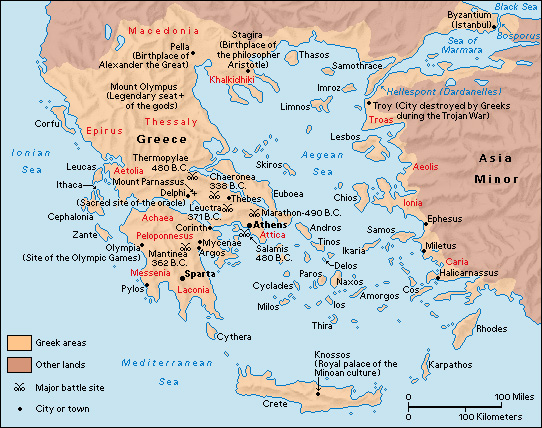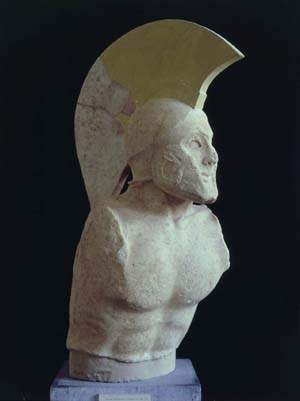Thermopylae, << thuhr MOP uh lee, >> was a mountain pass on the east coast of ancient Greece. It was the site of a famous battle between the Greek and Persian armies in 480 B.C. The Greek word Thermopylae means Hot Gates and refers to hot springs near the pass. Today, the area has eroded to a wide, marshy plain. But 2,500 years ago, the pass was only about 50 feet (15 meters) wide at its narrowest point and was the best place for travelers to pass into central Greece from the north.

In 480 B.C., King Xerxes I of Persia invaded Greece with a huge army and navy. Xerxes’ army traveled along the coast intending to march through Thermopylae and into central Greece. The defending Greek army of as many as 10,000 men, including both soldiers and their servants, was much smaller than the Persian army. But the Greeks knew that a small army could successfully defend the narrow mountain pass. They hoped the Greek army, under the command of King Leonidas I of Sparta, would halt the advance of the Persians there.

Xerxes’ soldiers attacked Thermopylae for two days, but the Greek army held them off. In the end, the Persians found a second mountain pass and attacked the Greeks from the rear. Before the Greeks were completely surrounded, Leonidas sent most of his troops inland to safety. But Leonidas, 300 other Spartans, and hundreds of other Greeks were killed defending Thermopylae. The two-day standoff at Thermopylae delayed the Persian army long enough for Greece to prepare for battle at the island of Salamis. The bravery of Leonidas and his soldiers inspired Greece to fight on to final victory against the Persians.
See also Greece, Ancient (The Persian wars); Leonidas I; Salamis; Xerxes I.
